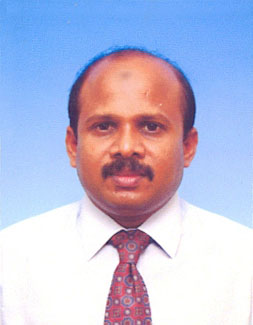
”އެމް.ވީ.އާއްމުއެފްކޭ“ ގެ ކުރު ތަޢާރުފެއް
މަޝްހޫރު ލިޔުންތެރިޔާ، އޭދަފުށީ ޢަބްދުﷲ ވަޙީދު، އާ އަޅުގަނޑު ބައްދަލުވާން މެދުވެރިވި ގޮތް ”އޭ-ވަހީދު“ މި ފޮންޓާ ބެހޭ ބަޔާނުން އެނގިވަޑައިގަންނަވާނެއެވެ. ކޮންމެ އަކަސް 1995 ވަނަ އަހަރު، ”އޭ-ވަހީދު“ ފޮންޓް އާ ބެހޭ ގޮތުން އޭނާގެ އިރުޝާދު ހޯދަމުން ދިޔައިރު، އޭނާ ހައްދަވާފައިވާ އަކުރު ސެޓެއް އޮތް ވާހަކަ ވިދާޅުވެ އެ އަކުރުސެޓްގެ ކޮޕީއެއް އަޅުގަނޑަށް ފޮނުއްވިއެވެ. މިއަކުރު ސެޓަކީ އެކި މުނާސަބަތު ތަކުގައި މާލޭގެ މަގުތަކުގެ ހުރަހަށް ދަމާ ފޮތިތަކުގައި ލިޔަން ގެންގުޅުނު އަކުރު ސެޓެކެވެ. މިއަކުރު ސެޓުގެ ކޮޕީއެއް މިއޮތީއެވެ. އޭނާ ވިދާޅުވާ ގޮތުގައި، އަކުރު ސެޓުން އެކްސް-ރޭ ގަނޑުގައި އަކުރުތައް ކަފައިގެން ފޮތީގައި ތައްގަނޑު ޖަހަނީއެވެ. މި އަކުރުސެޓްގެ އެންމެ ރަނގަޅު އެއްކަމަކީ ކޮންމެ އަކުރަކާއި ފިއްޔެއްގައި ފޮޅުވަތް ފާހަގަކޮށްފައިވާ ކަމެވެ. މިކަމުގެ ސަބަބުން އަކުރުތައް އެތުރުމަށް ފަސޭހަ ވެއެވެ. އަކުރުތަކުގެ އެތުރުމަކީ ލިޔުން ރީތިވާ ކަމެކެވެ. ކިތަންމެ ރީތި އަކުރުތަކެއް ވެސް، އެތުރުން ނުބައި ނަމަ، ލިޔުންގަނޑު ހުތުރު ވެދެއެވެ.
މިއަކުރުސެޓް ލިބުމުން އެ އަކުރު ސެޓުން އަޅުގަނޑު ފޮންޓެއް ހަދައިފީމެވެ. އެ ފޮންޓަށް އަޅުގަނޑުކީ ނަމަކީ ޢާއްމު ފަލަ ކަތި އެވެ. ނަމަވެސް ނަން ދިގުކަމުން ފަހުން، ”އާއްމުއެފްކޭ“ އަށް ބަދަލުކުރީއެވެ. މި ގޮތަށް ނަން ކިޔުމުގެ ޚިޔާލު އަޅުގަނޑަށް ދެއްވީ 1995 ގެ އަހަރުތަކުގައި، ތާނަ ލިޔާ ވާރޑް ޕްރޮސެސަރެއް ޕްރޮގްރާމް ކުރުމުގައި އަޅުގަނޑާއި އެކު އުޅުނު މަޖީދިއްޔާގެ ކުރީގެ ދަރިވަރު ޙުސެން ޒާހިދެވެ. އޭނާ އޭރު ދުށްގޮތުގައި، ފޮންޓުތަކަށް ނަން ކިޔަންވާނީ އަކުރުތަކުގެ ބައްޓަންތައް ސިފަކޮށްދޭ ގޮތަށެވެ. މި ފޮންޓަކީ، މާލޭގެ ނޫސްތަކުގައި ސުރުޚީ ލިޔަން އެންމެ ޢާންމުކޮށް ގެންގުޅޭ ފޮންޓެވެ. އެއީ އަކުރުތައް ވަރަށް ހަނިޖާގައެއްގައި ފަލަކޮށް ލިޔެވޭތީއެވެ. މި ލިޔުމުގެ ތިރީގައިވާ ނޫހެއްގެ ޞަފުހާއަކުން ފާހަގަކުރެވޭ ފަދައިންނެވެ. ތާނަ ފޮންޓުތައް (މޮޅެތި ލެޓިން ފޮންޓުތައް ފަދައިން) ފަރުމާކޮށްފައި ހުުންނަނީ ވަކި ސައިޒެއްގައި ލިޔުމަށެވެ. އެހެންކަމުން، މި ފޮންޓަކީ ބޮޑު އަކުރު ލިޔުމަށް ފަރުމާކޮށްފައިވާ ފޮންޓަކަށް ވާތީ، މި ފޮންޓު ބޭނުންކޮށްގެން ގާތްގަޑަކަށް 24 އަށް ވުރެ ކުޑަ ފޮންޓު ސައިޒެއްގައި ލިޔުމުން ކިޔަންވެސް ނޭނގިދާނެއެވެ.
މިއަކުރުތައް، އޯޕަންޓައިޕް ފީޗަރ ތަކާއެކު، 2015 ވަނަ އަހަރު މި ނެރެނީ ޢަބްދުﷲ ވަޙީދު އަލުން އަކުރުތަކަށް ބަދަލުތައް ގެންނަވަން ވިދާޅުވެގެން އެ ބަދަލުތައް ހިމަނާފައެވެ. މިއީ ފޮންޓަށް ލިބުނު ވަރަށް ބޮޑު ކުރިއެރުމެކެވެ. ޢަބްދުﷲ ވަޙީދަށް ވަރަށް ބޮޑަށް ޝުކުރިއްޔާއެވެ. ފޮންޓުގެ މި އިސްދާރުގައި ލެޓިން އަކުރުތައް ވެސް ހިމެނެއެވެ. ބައްޓަންތަކާއި އެތުރުން ގުޅޭ ގޮތަށެވެ. މި ވެބް ޞަފުޙާގެ އަކުރުތަކުގެ ސީދާ މެދާ ފިލި ދިމާނުވާނަމަ، އެއީ ތިބާ ބޭނުންކުރައްވަމުން ތިޔަ ގެންދަވާ ވެބް ބްރައުސަރުގެ ފޮންޓު ސްކްރީންގައި ކުރަހާ (ރެންޑަރ ކުރާ) ”އިންޖީނުން“ އޯޕަންޓައިޕް ފީޗަރ ތައް ޕްރޮސަސް ނުކުރަނީއެވެ. މައިކްރޯސޮފްޓު ވާރޑްގައި ލިޔާއިރު ފެނިވަޑައިގަންނަވާނީ ރީއްޗަށެވެ.
The serendipitous circumstances of meeting the renowned calligrapher, Abdulla Waheed, have been narrated in my short commentary on the design of A_Waheed font.
When I was receiving advice form him at that time (1995), he told me that he had made an akuruset (a set of all the Thaana akuru and fili, usually on an A4-sheet of paper) for bold lettering. Such letters are often used for stencil cutting in order to stamp letters for banners hung across streets on important days. When he gave me the akuruset, I made a font of it. The glyphs in the font are different from the akuruset in minor ways to make the them look elegant for the most common size at which the font is used.
The original akuruset is here.
At that time, together with Hussain Zahid, a former student of Majeediyya School, I was working on programming a word processor to handle Thaana typesetting. The work was inspired by the great need for such a program in the Maldives and partly by the significant work of Dr Donald Knuth (of TeX and Metafont fame) who had documented the development of an elaborate word processor in Computers & Typesetting, Volume B: TeX: The Program. His volumes of The Art of Computer Programming were some of my beloved books on Computer Science when I studied the discipline at Tasmania University. That was starting in 1980 long before I learnt what a genius he was. A mere reading and organization of the books will convince the reader of the author’s inspiring sense of design.
My involvement with the development of a word processor goes back to the early 1980s. Zahid came into the picture in the early 1990s. I recall Zahid writing the display code in assembly language because computers were so slow then. He suggested naming fonts descriptive of their looks. So I called it Aammu Fala Kathi which means Common Bold Italic. Since the name was too long, it was shortened to AammuFK. That is how the font got its name. The font is very commonly used for bold lettering in the Maldives. In fact, it is the font of choice for newspaper headlines as seen in the included image.
 Thaana fonts intended for large text are quite different from body text fonts. In fact, if this bold font is used as a book font, the text would be almost unreadable. Incidentally, in outstanding Latin fonts, letters are slightly different for different point sizes. AammuFK is characterized by its thick stroke and seems almost force-fitted within a narrow em-square. This is the reason why editors love them; readable text can be fitted within a narrow spacing.
Thaana fonts intended for large text are quite different from body text fonts. In fact, if this bold font is used as a book font, the text would be almost unreadable. Incidentally, in outstanding Latin fonts, letters are slightly different for different point sizes. AammuFK is characterized by its thick stroke and seems almost force-fitted within a narrow em-square. This is the reason why editors love them; readable text can be fitted within a narrow spacing.
This version of AammuFK uses Opentype features and the outlines have been cleaned from the previous ones. The font rendering engines of most operating systems have improved in the past 20 years so much that the font definition curves can be simplified. This new version has been much improved by the original calligrapher. I thank Abdulla Waheed for his meticulous advice on modifying glyph curves to enhance the look of the font.
Dated: December 20, 2015
ފޮންޓު ޑައުންލޯޑު ކުރައްވާ

Do you still have some of the code available from back then? Also I didn’t know there were other fellow Maldivians who really enjoyed reading the art of programming series, it’s a truly captivating volume of books, I never finished all of them, but it was a fun read.
Unfortunately, the disks became unreadable due to age. However, the (old version) of the code of Microsoft Word is now freely available in the public domain. You can download it from here: https://github.com/danielcosta/MSWORD
At university The Art of Programming (TAOP) was a recommended text, not a prescribed one (on account of price, I think); so I did not own them, but read them. I bought a derivative of the book which was the prescribed one — Data Structures Using Pascal by Tenenbaum et al. I still have this one. The lecturers used Knuth’s to teach and all notes were given from the book. If you are interested in word processing then MetaFont and the TeXbook will be most interesting. These books lay the foundations for digital fonts and word processing.
Varah furiham rangalhu masahkatheh!